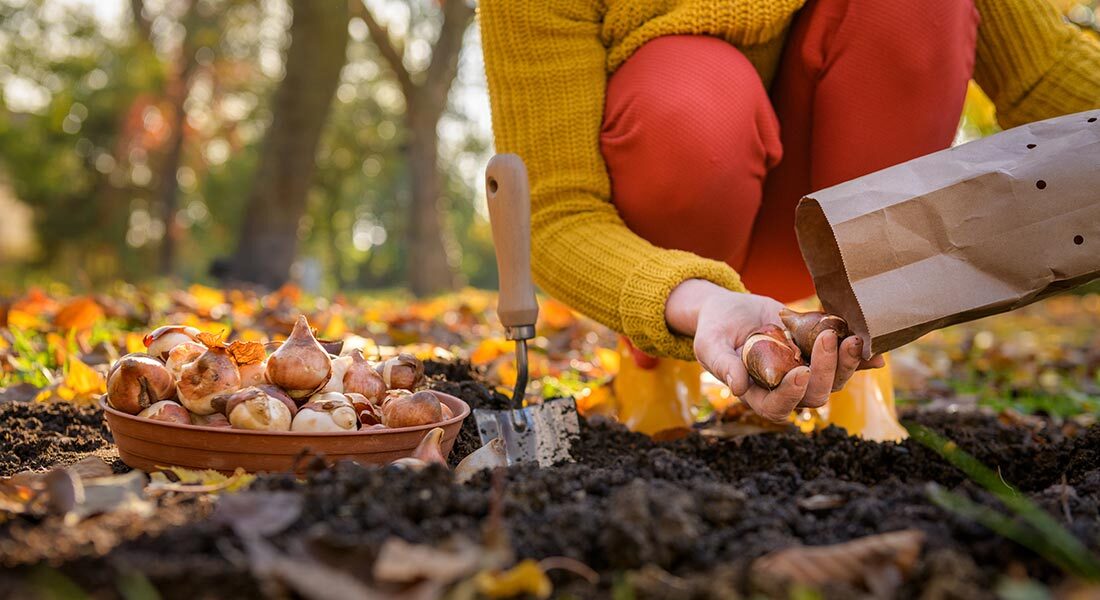When is the best time to divide spring and summer perennials?

The fall is the ideal time to divide spring and summer perennials. More specifically, try and time it four to six weeks before the ground freezes. This will help the roots of the divided plants get established. Bur first, some information on perennials — and the need to divide them.
What are perennials?
Simply put, perennials are flowering plants that grow back and bloom year after year. Common perennials run the gamut from allium, aster, bee balm and bleeding heart to coral bells, delphinium, hollyhocks, peonies, phlox and sweet woodruff. There are dozens of different perennials in all shapes and sizes.
Why do perennials need to be divided?
After a few years in the garden, perennials tend to show signs of being less productive — producing smaller blooms, requiring stakes to prevent their once-stronger stems from falling over, and developing a “bald spot” at the center of their crown.
What’s more, as perennials grow, they often spread out and bump into other plants in your landscape and garden. Overcrowded plants compete for nutrients and water, and restricted airflow can lead to a variety of diseases.
Dividing a single perennial into smaller sections reduces this competition and stimulates new growth, along with more vigorous blooms. Dividing perennials gives each plant more space for their roots to grow, which helps them absorb needed nutrients and water. It also helps manage the size of the plants, preventing them from spreading out too much or becoming leggy.
And dividing perennials is an easy — and inexpensive — way to increase the number of plants in your yard. You can divide one good-sized pincushion plant, for example, into three smaller plants, tripling your number of plants. And each smaller plant has the potential to grow into an even better version of the plant they came from.
Why is fall the best time to divide spring and summer perennials?
By the time the hot summer is over and the season turns to fall, most perennials are done flowering, so the plant can spend all of its energy on regenerating root and leaf tissue. Cooler weather is less stressful for the plants — both during division and once replanted. If possible, divide plants when there are a few days of rain in the forecast, to provide the necessary moisture for the transplants. If there’s no rain ahead, water the soil around the plant and in the areas you plan to replant them a day in advance. As long as you do your dividing well before the ground freezes, the plants will have a chance to establish their root systems, then remain dormant through the winter, ready to bloom anew in the spring.
How do I divide the perennials?
Dig up the parent plant using a garden spade or fork. Gently lift the plant out of the ground and remove any loose dirt around the roots. Perennials fall under five basic toot types: roots that form clumps, surface roots, underground running roots, taproots, or woody roots. Keep this in mind when dividing the plants, as different roots require different ways of breaking them apart. Separate the plant into smaller chunks using one of these three methods:
- Gently pull or shake the roots apart with your hands
- Cut the roots using a sharp knife or spade
- Put two forks in the center of the clump, back-to-back, then pull the forks apart until the root area breaks apart
Aim for ending up with pieces that are 20% to 25% of the original plant, at most. Smaller sections grow more vigorously and tend to produce stronger, longer-lasting blooms. Make sure each of your smaller divisions have three to five well-established shoots along with a healthy supply of roots. Keep these divisions moist and plant them as soon as possible.
Planting the new plants
Be sure and loosen up the soil where you’re going to plant the newly divided plants. It should be extremely crumbly and aerated, giving the new roots a place to expand and more able to become established down and deep into the ground. For soil that’s less than idea, it’s a good idea to add some Rogue Compost into the hole to nourish the roots, giving these plants a quick boost. One rule of thumb is that if you pull out a bucket full of perennials, then put a bucket full of compost back into that side before replanting.
If your parent plant was thriving where it was — full sun, partial sun, shade — find a spot that duplicates the conditions. If your parent plant wasn’t doing so well, consider trying a new spot where the conditions are different.
Through the everyday magic of dividing, each Russian sage, Shasta daisy and Virginia bluebell becomes multiple plants, allowing you to add more yearly color to your yard for free.
Share This
